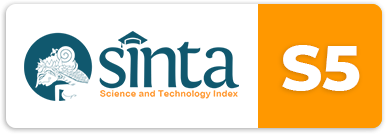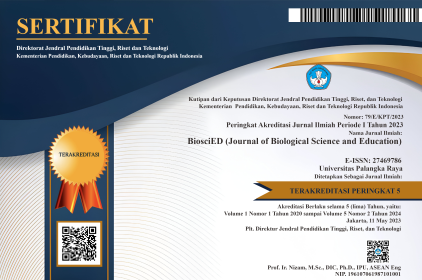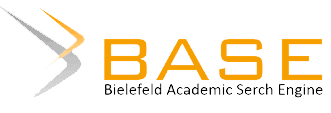Identifikasi Zooplankton Predator dalam Kultur Chlorella sp.
The Identification of Predatory Zooplankton in Chlorella sp. Culture
DOI:
https://doi.org/10.37304/bed.v3i1.5003Keywords:
Chlorella sp., Fitoplankton, Mikroalga, Zooplankton, ZoologiAbstract
Zooplankton dalam kultur Chlorella sp. menjadi predator alami yang keberadaannya dapat menghambat laju pertumbuhan Chlorella sp. Hasil observasi awal menunjukkan keberadaan zooplankton, seperti Amoeba dan Rotifera, dalam kultur Chlorella sp. Identifikasi zooplankton predator perlu dilakukan sebagai upaya awal untuk mengontrol predator yang menghambat pertumbuhan Chlorella sp. Penelitian ini merupakan penelitian deskriptif kualitatif dengan metode direct observation. Obervasi zooplankton dilakukan terhadap sampel air kultur Chlorella sp. di Laboratorium Pendidikan Biologi FKIP Universitas Palangka Raya menggunakan Mikroskop Olympus CX21 pada perbesaran 400× (10× ocular; 40× objective) dan 1000× (10× ocular; 100× objective). Chlorella sp. dikultur menggunakan fotobioreaktor sederhana selama 7 (tujuh) hari. Hasil observasi dan identifikasi pada sampel didapatkan 8 jenis zooplankton predator yang aktif memakan Chlorella sp. Zooplankton predator yang teridentifikasi terdiri dari 2 spesies protozoa (Arcella sp. dan Coleps sp.), 5 spesies rotifera (Collotheca sp., Euchlanis sp., Anuraeopsis sp., Brachionus sp., dan Vorticella sp.), dan 1 spesies crustacea (Cyclops sp.).
Downloads
References
Bewicke, D., & Potter, B. (1984). Chlorella: The Emerald Food (1st ed.). Ronin Publishing.
Brusca, R. C., & Brusca, G. J. (2003). Invertebrates. Sinauer Associates, Inc.
Buonanno, F., Anesi, A., Guella, G., Kumar, S., Bharti, D., La Terza, A., Quassinti, L., Bramucci, M., & Ortenzi, C. (2014). Chemical offense by means of toxicysts in the freshwater ciliate, Coleps hirtus. The Journal of Eukaryotic Microbiology, 61(3), 293–304. https://doi.org/10.1111/jeu.12106
Carey, Philip G. (1992). Marine Interstitial Ciliates: An Illustrated Key. Chapman Hall.
Dewi, E. R. S., & Nuravivah, R. (2018). Potential of Microalgae Chlorella vulgaris As Bioremediation Agents of Heavy Metal Pb (Lead) On Culture Media. E3S Web of Conferences, 31, 3–6. https://doi.org/10.1051/e3sconf/20183105010
Gehrels, W. R. (2007). SEA LEVEL STUDIES | Microfossil Reconstructions. In S. A. Elias (Ed.), Encyclopedia of Quaternary Science (pp. 3015–3024). Elsevier. https://doi.org/10.1016/B0-44-452747-8/00146-0
Glime, J. M. (2020). Invertebrates: Rotifers. Chapt. 4-5. In: Glime, J. M. Bryophyte Ecology. Volume 2. Bryological Interaction. 4-5-1 Ebook Sponsored by Michigan Technological University and the International Association of Bryologists.
Hochberg, R., O’Brien, S., & Puleo, A. (2010). Behavior, metamorphosis, and muscular organization of the predatory rotifer Acyclus inquietus (Rotifera, Monogononta). Invertebrate Biology, 129, 210–219. https://doi.org/10.1111/j.1744-7410.2010.00202.x
Huys, R. (2014). Chaper 27. Copepoda.
Konishi, F., Tanaka, K., Himeno, K., Taniguchi, K., & Nomoto, K. (1985). Antitumor effect induced by a hot water extract of Chlorella vulgaris (CE): Resistance to Meth-A tumor growth mediated by CE-induced polymorphonuclear leukocytes. Cancer Immunology, Immunotherapy : CII, 19(2), 73–78. https://doi.org/10.1007/BF00199712
Meksuwan, P., Pholpunthin, P., & Segers, H. (2013). The Collothecidae (Rotifera, Collothecacea) of Thailand, with the description of a new species and an illustrated key to the Southeast Asian fauna. ZooKeys, 315, 1–16. https://doi.org/10.3897/zookeys.315.5330
Miranda, M. S., Sato, S., & Mancini-Filho, J. (2001). Antioxidant activity of the microalga Chlorella vulgaris cultered on special conditions. Bollettino Chimico Farmaceutico, 140(3), 165–168.
Noland, L. E., & Finley, H. E. (1931). Studies on the Taxonomy of the Genus Vorticella. Transactions of the American Microscopical Society, 50(2), 81–123. JSTOR. https://doi.org/10.2307/3222280
Örstan, A. (2021). AN INTRODUCTION TO BDELLOID ROTIFERS AND THEIR STUDY.
Rani, K. P., Sandal, N., & Sahoo, P. (2018). A comprehensive review on chlorella-its composition, health benefits, market and regulatory scenario. The Pharma Innovation Journal, 7, 584–589.
Redjeki, S. (1999). BUDIDAYA ROTIFERA (Brachionus plicatilis). Oseana, XXIV, 27–43.
Ryu, S., Pepper, R. E., Nagai, M., & France, D. C. (2017). Vorticella: A Protozoan for Bio-Inspired Engineering. Micromachines, 8(1). https://doi.org/10.3390/mi8010004
Sarma, S. S. S., Iyer, N., & Dumont, H. J. (1996). Competitive interactions between herbivorous rotifers: Importance of food concentration and initial population density. Hydrobiologia, 331(1), 1–7. https://doi.org/10.1007/BF00025402
Shibata, S., Natori, Y., Nishihara, T., Tomisaka, K., Matsumoto, K., Sansawa, H., & Nguyen, V. C. (2003). Antioxidant and anti-cataract effects of Chlorella on rats with streptozotocin-induced diabetes. Journal of Nutritional Science and Vitaminology, 49(5), 334–339. https://doi.org/10.3177/jnsv.49.334
Tanaka, K., Tomita, Y., Tsuruta, M., Konishi, F., Okuda, M., Himeno, K., & Nomoto, K. (1990). Oral administration of Chlorella vulgaris augments concomitant antitumor immunity. Immunopharmacology and Immunotoxicology, 12(2), 277–291. https://doi.org/10.3109/08923979009019673
Todorov, M., & Bankov, N. (2019). An Atlas of Sphagnum-Dwelling Testate Amoebae in Bulgaria. Advanced Books, 1, Advanced Books. https://doi.org/10.3897/ab.e38685
Downloads
Published
How to Cite
Issue
Section
License
Copyright (c) 2022 Yos Sudarso, Agus Haryono, Shanty Savitri, Bejo Basuki

This work is licensed under a Creative Commons Attribution 4.0 International License.















